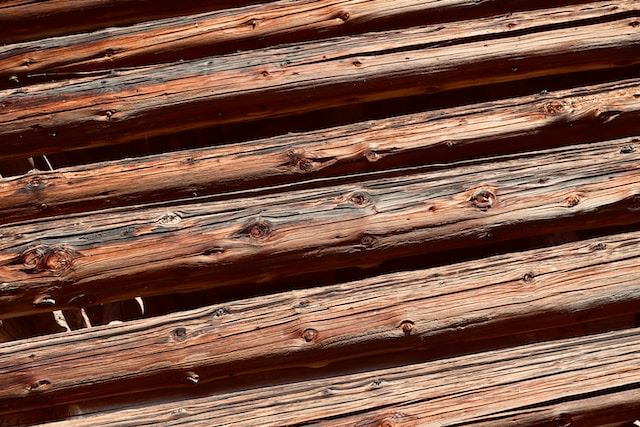One of the top priorities for Charleston, South Carolina, homeowners are protecting their properties from termite infestations. Knowing what signs indicate an infestation can help prevent severe damage and keep your home safe.
Mud tubes, or a termite nest on an outside wall, often indicate the presence of termites. These tubes serve as highways for termites, allowing them to access their food sources while remaining hidden from sight.
In this blog post, we will explore the significance of mud tubes and shed light on how Precision Pest & Home Services in Charleston addresses these subterranean termite infestations.
Understanding Subterranean Termites and Their Behavior
Subterranean termites thrive in colonies below ground level. These tiny but mighty insects construct intricate tunnel systems to navigate their surroundings and access food sources.
Unfortunately, this means they can easily find their way into homes and buildings through even the tiniest cracks or gaps in the foundation. Once inside, they embark on a feeding frenzy that can cause substantial damage to the structure, especially the highly destructive Formosan termites.
These termites are relentless in their pursuit of cellulose-rich materials, with wood being their primary target. Their insatiable appetite for wood and other cellulose-based substances drives them to forage extensively, often leading them straight to our homes. Once they gain entry, they waste no time feasting on anything wooden they come across.
No wooden element is safe from their ravenous jaws, from structural beams to wooden furniture, flooring, and even paper products. Over time, their persistent feeding weakens the structural integrity of affected areas, posing a severe threat to the safety and stability of the entire building.

What makes subterranean termites particularly challenging to detect is their knack for remaining concealed. Unlike other termites that build visible mounds above ground or within wood, subterranean termites prefer to keep a low profile.
They construct their nests underground and travel through an elaborate network of tunnels, avoiding exposure to the external environment. This secretive behavior, combined with their preference for dark and moist conditions, allows them to operate unnoticed, often resulting in termite infestations going undetected until significant damage has already been done.
Adding to their impressive survival skills, subterranean termites have an uncanny ability to sense environmental changes. They can detect variations in temperature, humidity, and even carbon dioxide levels, which helps them adapt their tunneling patterns and foraging behavior accordingly.
This heightened sensitivity allows them to optimize their chances of survival and successfully exploit available food sources.
The Significance of a Termite Nest on Outside Walls
Mud tubes serve as vital indicators of termite activity and infestation. These peculiar structures, often as thick as a pencil or even thicker, consist of soil, termite feces, and saliva. As essential lifelines, mud tubes provide shelter and maintain moisture levels for subterranean termites during their constant journeys between their nest and food sources.
Recognizing the presence of mud tubes on the outside walls of a property is of utmost importance as it allows for the early detection of termite infestations and enables homeowners to take appropriate action promptly.
The significance of termite nests lies in their two primary purposes for subterranean termites:
Protection: Subterranean termites are delicate creatures that require a specific and controlled environment to survive. Mud tubes protect them from threats such as predators, direct sunlight, and harsh weather conditions. By constructing these tunnels, termites create a secure pathway that shields them from external dangers, ensuring their survival during their extensive foraging expeditions.
Moisture Regulation: Moisture is essential for the survival of subterranean termites, and mud tubes play a pivotal role in maintaining a humid and favorable environment within these structures. As termites travel back and forth between their nest and food sources, the mud tubes help retain the necessary moisture levels, preventing the termites from desiccating or drying out. The damp environment inside the tubes helps sustain their physiological functions, ensuring they can continue their destructive activities without interruption.
Early detection of a termite nest on the outside walls of a property can empower homeowners to act swiftly and engage professional pest control services, such as Precision Pest and Home Services in Charleston, South Carolina.
We have the knowledge and tools to effectively address termite infestations and eliminate the underlying colonies causing the mud tube formations. With prompt intervention, homeowners can protect their properties from further structural damage and mitigate the potential financial burden of extensive termite-related repairs.
Addressing Subterranean Termite Infestations with Precision Pest and Home Services
For reliable and practical solutions to subterranean termite infestations and mud tubes on outside walls, Charleston homeowners can turn to Precision Pest & Home Services.
With our dedicated team of professionals, we offer comprehensive inspections to assess the extent of the infestation, ensuring that your home is safeguarded from destructive subterranean termites and termite nests on your outside walls. Let us bring you peace of mind through our expertise and effective termite control solutions. Contact us today!
The post Termite Nest on Outside Wall: Your Next Steps appeared first on Precision Pest & Home Services | Pest Control Experts in Greater Charleston, SC.

